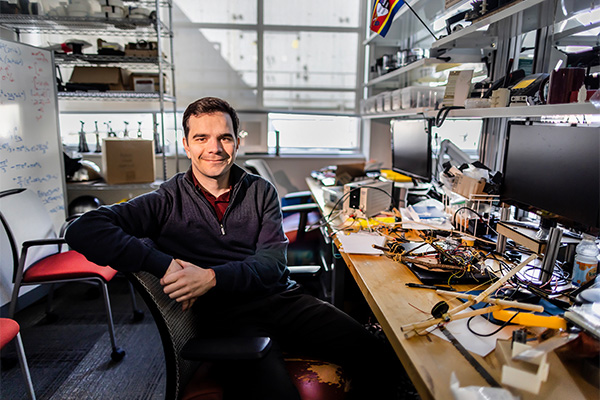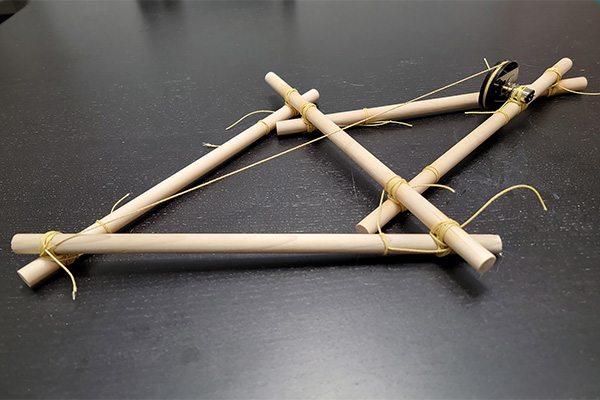
Who
Devin Carroll is a Ph.D. candidate in the School of Engineering and Applied Science in the Department of Mechanical Engineering and Applied Mechanics.
At Penn, Carroll designs and builds robots made from the materials around us, like tree branches and ice. He says, “When I was growing up, one of the major barriers to working with robots was that we didn’t have access to parts, so I want to show people what we can do with the stuff around us.”
“I couldn’t build robots until I got to college, and even then it was only when I started my Ph.D. program that I got to work on my own robots made of really advanced materials but also some made from stuff you can find in your backyard, like sticks.”
Carroll’s interest in engineering began early. Growing up in rural Massachusetts, he says, he was always tinkering with scrap materials around the family farm. “I’d always be playing with my hands and making things with Legos, so I knew early on that I wanted to be an engineer,” Carroll says. “Well, that and I had access to computer-aided design programs because my dad was an engineer, so he had some kicking around.”
What
In the GRASP Lab, Carroll works in the ModLab of Asa Whitney Professor Mark Yim where they develop modular robots, which, like Legos, are made of multiple subunits that can be assembled and reconfigured to do a variety of tasks. Carroll’s latest device builds on a previous project by using found materials to make robots and is a motor-powered device comprised of sticks and strings that could someday be used to support the recovery of an injured arm in a clinical setting.

“The idea behind this orthosis, which can be made our tree branches, is that we’re trying to reduce the barrier of entry for anyone who wants to design these different types of robots,” says Carroll, who is working with associate professor Michelle Johnson, whose lab develops rehabilitative robots.
Why
Carroll shares his belief that people become engineers so that their work can make a difference in the world. He says that he, Yim, and Johnson are looking for ways to bring their more accessible technologies to people in lower- and middle-income countries, saying, “Access to rehabilitative medical treatment is a major problem in many of these places because orthoses are incredibly expensive.
“But if you can start making these devices out of easy-to-find and cheap materials, you could positively impact many lives,” Carroll says. “You’ve got the building blocks all around you, so let’s go to town and make something that can help people.”
